Best Strategies For Autism-Friendly Event Planning
Understanding Autism-Friendly Event Planning
Planning events that are inclusive for individuals with autism requires thoughtful consideration of their unique needs and behaviors. This article explores effective strategies rooted in behavioral science and therapeutic approaches, aiming to foster environments where everyone can participate comfortably and confidently.
Foundations of Applied Behavior Analysis (ABA) in Event Planning
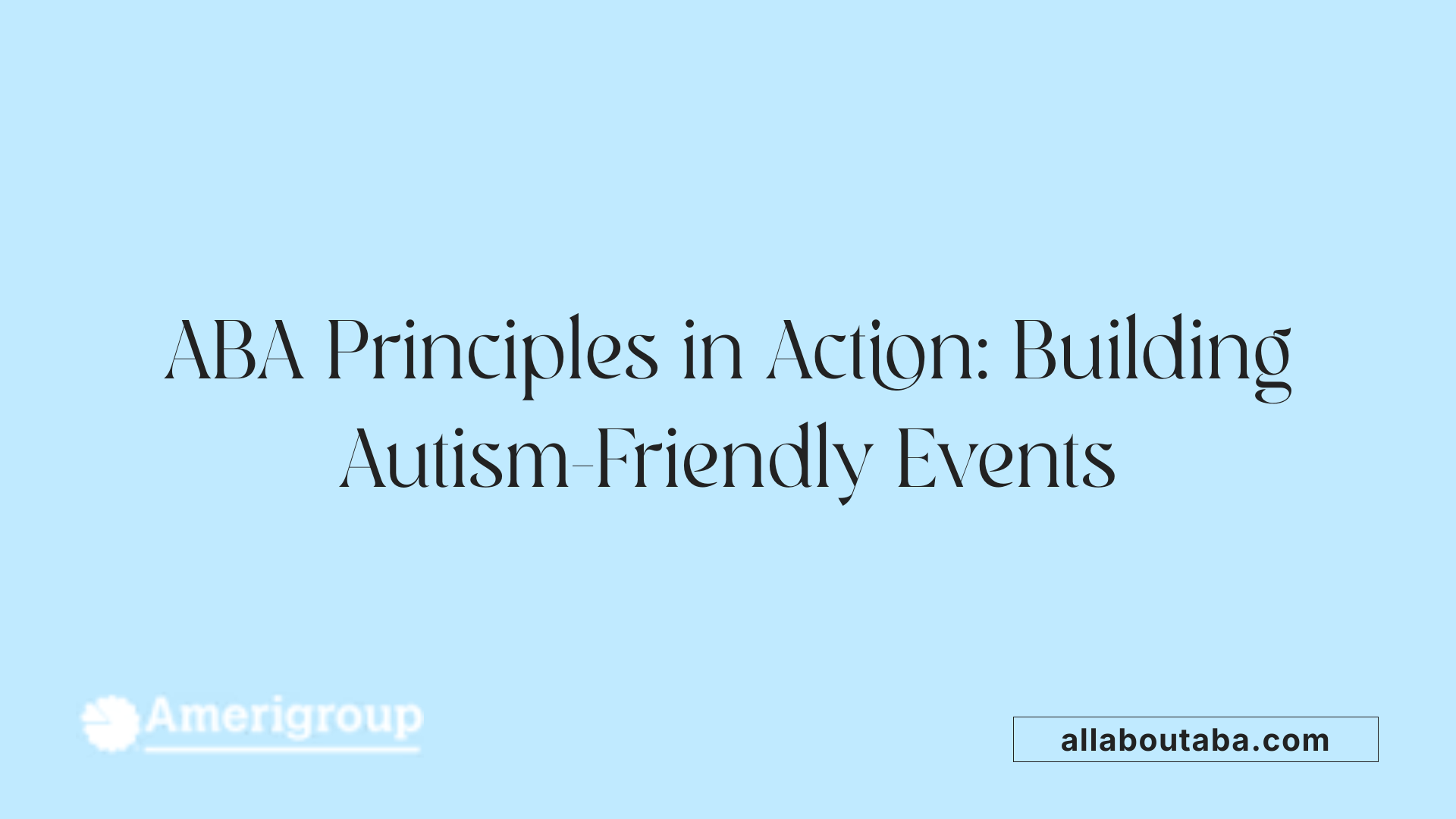
What is Applied Behavior Analysis (ABA) therapy?
Applied Behavior Analysis (ABA) therapy is a science-based approach that uses principles of learning and behavior to support individuals, particularly those with autism. ABA focuses on developing essential skills and reducing problematic behaviors through individualized programs crafted by qualified behavior analysts.
Key techniques within ABA relevant to autism-friendly settings
ABA employs structured methods such as Discrete Trial Training and naturalistic strategies like Pivotal Response Treatment to teach communication, social, and self-care skills. Techniques prioritize positive reinforcement and breaking tasks into manageable steps. Visual supports and clear, concrete directions enhance understanding during activities or transitions.
Role of ABA in behavioral support at events
In autism-friendly events, ABA principles ensure environments are predictable and supportive. Strategies include using visual schedules, descriptive praise, and providing choices to empower participants and reduce anxiety. Early recognition of distress signs allows for proactive calming interventions. Collaborative approaches involving families and professionals help tailor supports to individual needs, fostering successful social interactions and engagement.
| Aspect | Description | Application to Event Planning |
|---|---|---|
| Individualized Approach | Tailors interventions to each child's unique needs | Customize supports based on participant profiles |
| Positive Reinforcement | Encourages desired behaviors through praise and rewards | Use descriptive praise and privileges at events |
| Structured Teaching | Breaks down skills into clear steps with visual aids | Visual schedules and timers guide activity flow |
| Behavioral Analysis | Ongoing assessment to track progress | Monitor participant responses to adjust strategies |
| Collaboration | Involves families and specialists for consistency | Coordinate input for event accommodations |
Tailoring Support Through Individual Profiles and Sensory Considerations

Utilizing Individual 'About Me' Sheets
Getting to know each student on a personal level is essential for effectively supporting children with autism. "About Me" sheets, which detail a student's likes, dislikes, fears, and specific needs, provide educators with valuable insights. This individualized information helps tailor strategies and responses to match the student's preferences and reduce anxiety, making the learning environment more comfortable and inviting.
Adapting Environments for Sensory Sensitivities
Many students with autism experience sensory sensitivities that can impact their ability to engage and learn effectively. Classrooms and event spaces should be adjusted to minimize sensory overload. This includes controlling noise levels, reducing echoes, and managing lighting to prevent overstimulation. Seating arrangements can be strategically designed to help students focus and manage sensory input more effectively.
Creating Sensory-Friendly Spaces at Events
Organizers of school events and activities can enhance inclusivity by establishing dedicated sensory-friendly areas. These spaces offer calming tools such as noise-canceling headphones and fidget toys, allowing students to retreat when feeling overwhelmed. Providing physical and visual supports in these zones also helps students anticipate transitions and cope with the social and sensory demands of group settings.
By combining individualized profiles with thoughtful environmental adjustments, educators and event planners can create supportive, welcoming spaces that promote positive experiences and skill development for students with autism.
Communication Strategies and Visual Supports for Engagement

Understanding communication challenges in autism
Students with autism often face unique communication difficulties, which can lead to unexpected reactions or behaviors. Recognizing and actively understanding these communication cues is essential for educators. Awareness of individual needs allows for supportive responses that help students feel understood and reduce frustration.
Use of visual supports such as schedules and social narratives
Visual supports play a crucial role in enhancing communication and engagement. Tools like visual schedules, written rules, pictures, and social narratives help students grasp routines and expectations clearly. Visual timers, such as red clocks or sand timers, assist children in comprehending time constraints, making transitions smoother.
Visual or physical schedules break down daily activities into manageable steps and offer predictability, which significantly reduces anxiety. Additionally, showing children the next activity or toy provides clear cues that aid in switching between tasks, further supporting engagement.
Benefits of clear, concrete language and positive reinforcement
Using short, clear, and concrete directions ensures better understanding and compliance. Breaking tasks into smaller steps matches cognitive processing, enabling students to follow instructions successfully.
Positive reinforcement, including descriptive praise and rewards, encourages participation and desirable behaviors. Providing choices within limited options, supported by visual aids like picture choices, empowers students and reduces overwhelm. These strategies foster an inclusive and supportive environment for students with autism to thrive.
Structuring Routines and Managing Transitions Effectively

Importance of Clear Routine and Advance Preparation
Establishing clear and consistent routines is essential for students with autism to reduce anxiety and improve their ability to transition smoothly between activities. When students know what to expect, they feel more secure and are less likely to experience stress or challenging behaviors. Preparing students in advance for changes in schedule or environment helps minimize surprises, facilitating calmer and more regulated responses.
Use of Visual and Physical Schedules
Visual supports such as written rules, picture schedules, and social narratives are powerful tools to help students understand their daily structure and expectations. Visual or physical schedules break down the day into manageable steps, which is especially useful for students who struggle with language comprehension. These schedules promote predictability and support independence, enabling students to anticipate what comes next without relying solely on verbal instructions.
Implementing Visual Timers and Transition Objects
Visual timers—such as sand timers or colored clocks—assist children in grasping the concept of time remaining for tasks or activities. This enhances their ability to manage transitions by providing a concrete indication of when one activity will end and another will begin. Additionally, allowing students to bring transitional objects from one activity to another can lower stress and provide emotional comfort during changes. These strategies create a more supportive environment for successful transitions, improving overall classroom engagement.
Promoting Social Interaction and Positive Behavioral Modeling
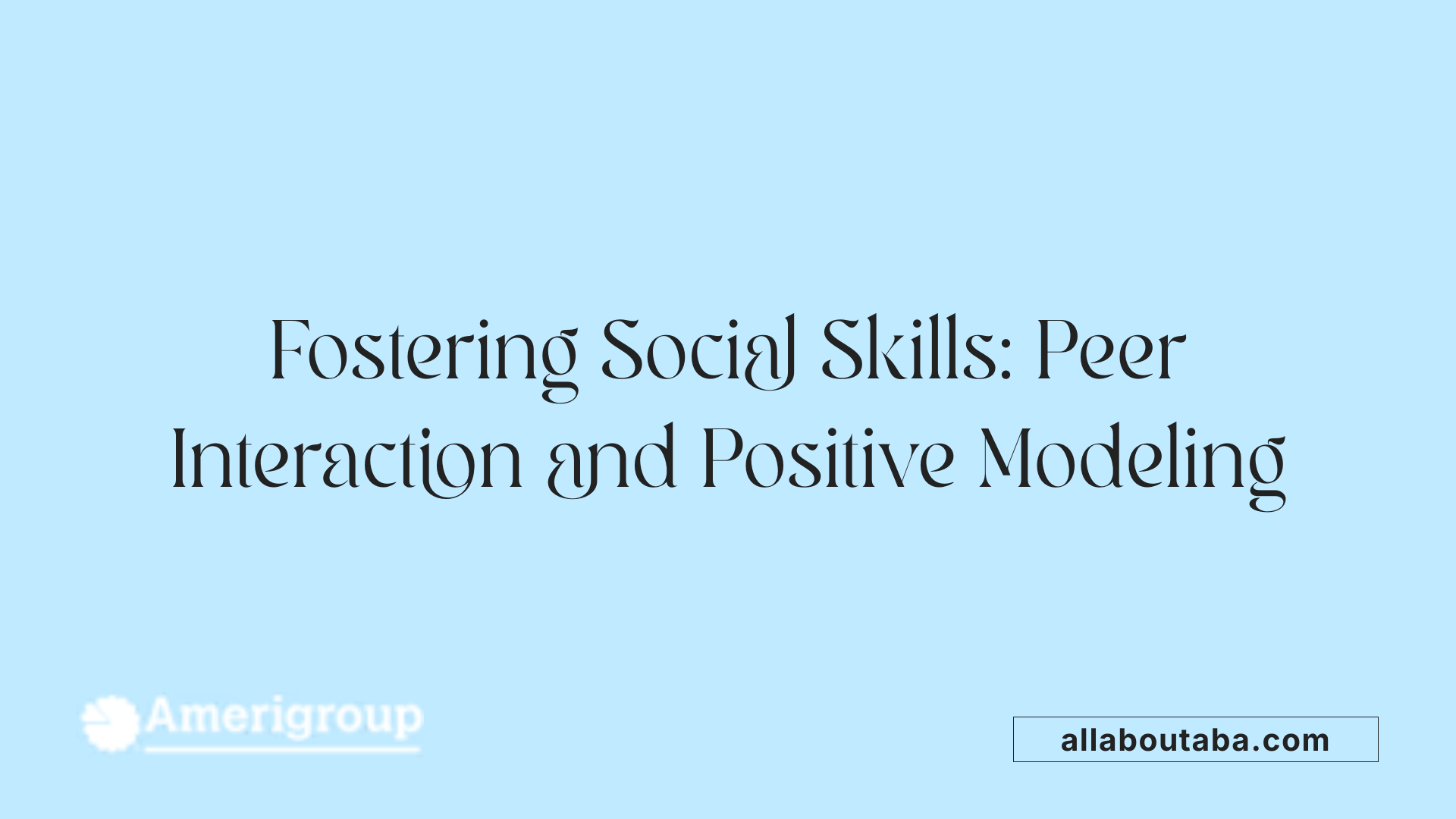
Encouraging Peer Interactions and Social Skills
Creating a welcoming classroom environment that facilitates social interaction among students with autism is essential. Encouraging collaborative activities and peer modeling helps prevent social isolation and promotes the development of communication skills. Structured social skills groups and peer-based interventions are effective strategies to build meaningful relationships and enhance social competence.
Modeling Calm, Positive Behavior
Educators who maintain a calm and positive demeanor serve as powerful role models for students with autism. Children often mirror adult emotional states, so embodying patience and calmness can reduce anxiety and improve behavioral outcomes. This modeling helps establish a safe and supportive atmosphere where students feel understood and valued.
Use of Descriptive Praise and Social Stories to Reinforce Appropriate Behavior
Employing specific, descriptive praise rather than general comments reinforces desired behaviors and encourages active participation. For example, saying, "I like how you waited your turn," highlights the behavior to be repeated. Additionally, social stories and visual narratives help students comprehend social expectations, improving understanding and compliance in varied settings. These tools personalize learning and offer clear examples of appropriate social behaviors.
ABA Therapy Providers and Age Considerations in Autism Support
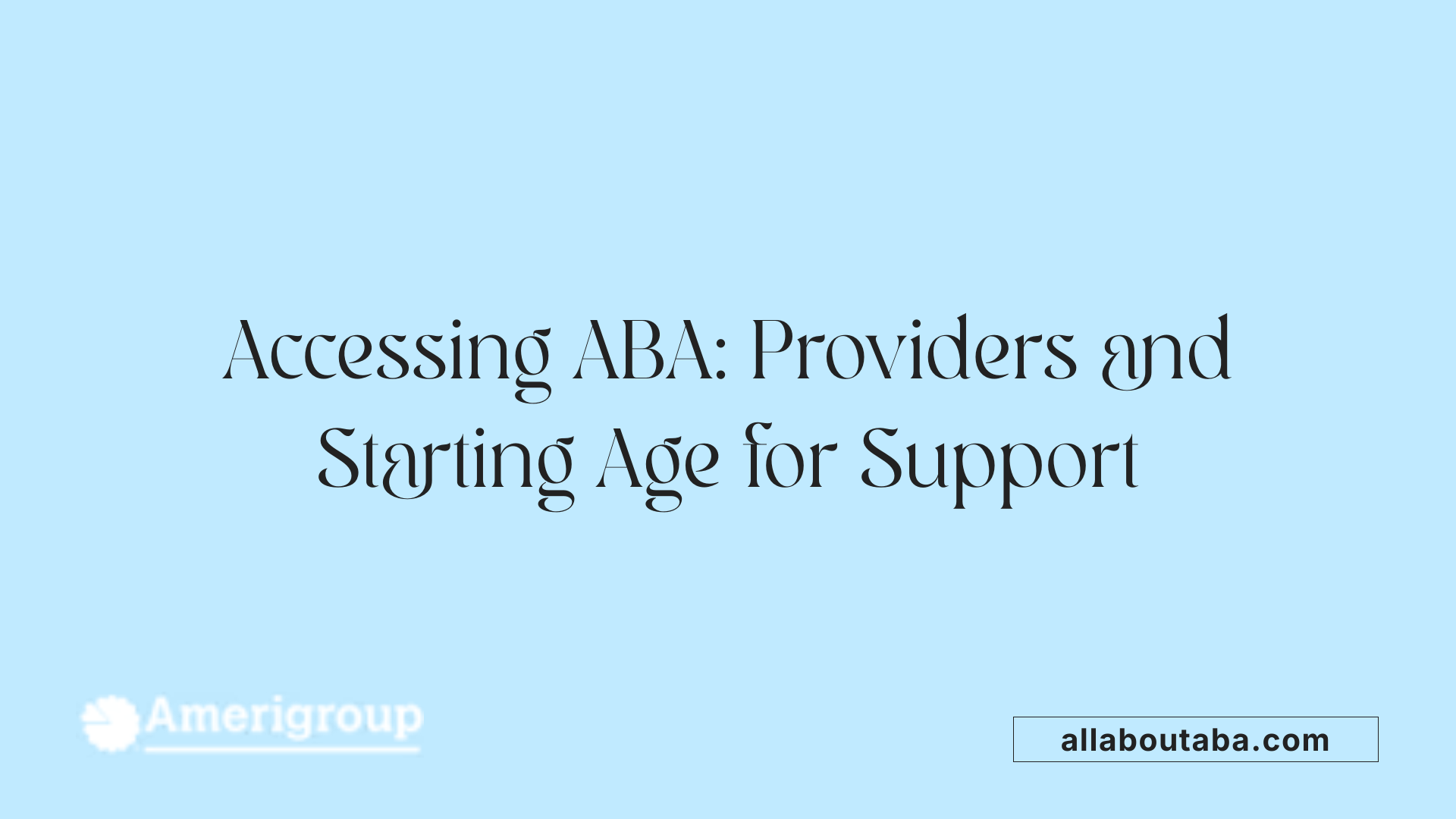
Who provides ABA therapy?
ABA therapy is delivered by qualified professionals trained specifically in behavioral analysis. The primary providers are board-certified behavior analysts (BCBAs), who assess each child's unique needs and craft personalized treatment plans. Licensed behavior technicians or therapists typically conduct the day-to-day therapy sessions under the careful supervision of a BCBA. Specialized autism support clinics and companies also offer ABA services, ensuring programs adhere to evidence-based strategies. Families can begin ABA by consulting healthcare providers, exploring insurance options, and using resource directories to find competent practitioners.
At what age can ABA therapy be started?
ABA therapy is flexible and can begin at nearly any age, from infancy through adulthood. Early intervention, especially between 2 and 6 years old, is the most beneficial period, with efforts ideally started before age 4 to foster communication and social skills development effectively. For infants as young as 6 months, models like the Early Start Denver Model (ESDM) introduce early social engagement and reduce further intervention needs. However, ABA remains valuable for teenagers and adults, supporting behavioral improvements and daily living skills across the lifespan. The timing of ABA initiation should always consider the individual's developmental needs.
Importance of individualized approaches in therapy
Individualization is essential to effective ABA therapy. Each child with autism has a distinct profile of strengths, challenges, and preferences requiring tailored interventions. Customized programs adapt goals, teaching methods, and reinforcement systems to better support the learner’s growth. Collaboration between behavior analysts, families, and educators enriches treatment consistency and success. Personalized ABA therapy not only targets observable behaviors but also builds coping skills, communication, and independence suited to the person's unique needs and life stage.
Diverse ABA Therapy Modalities for Diverse Needs
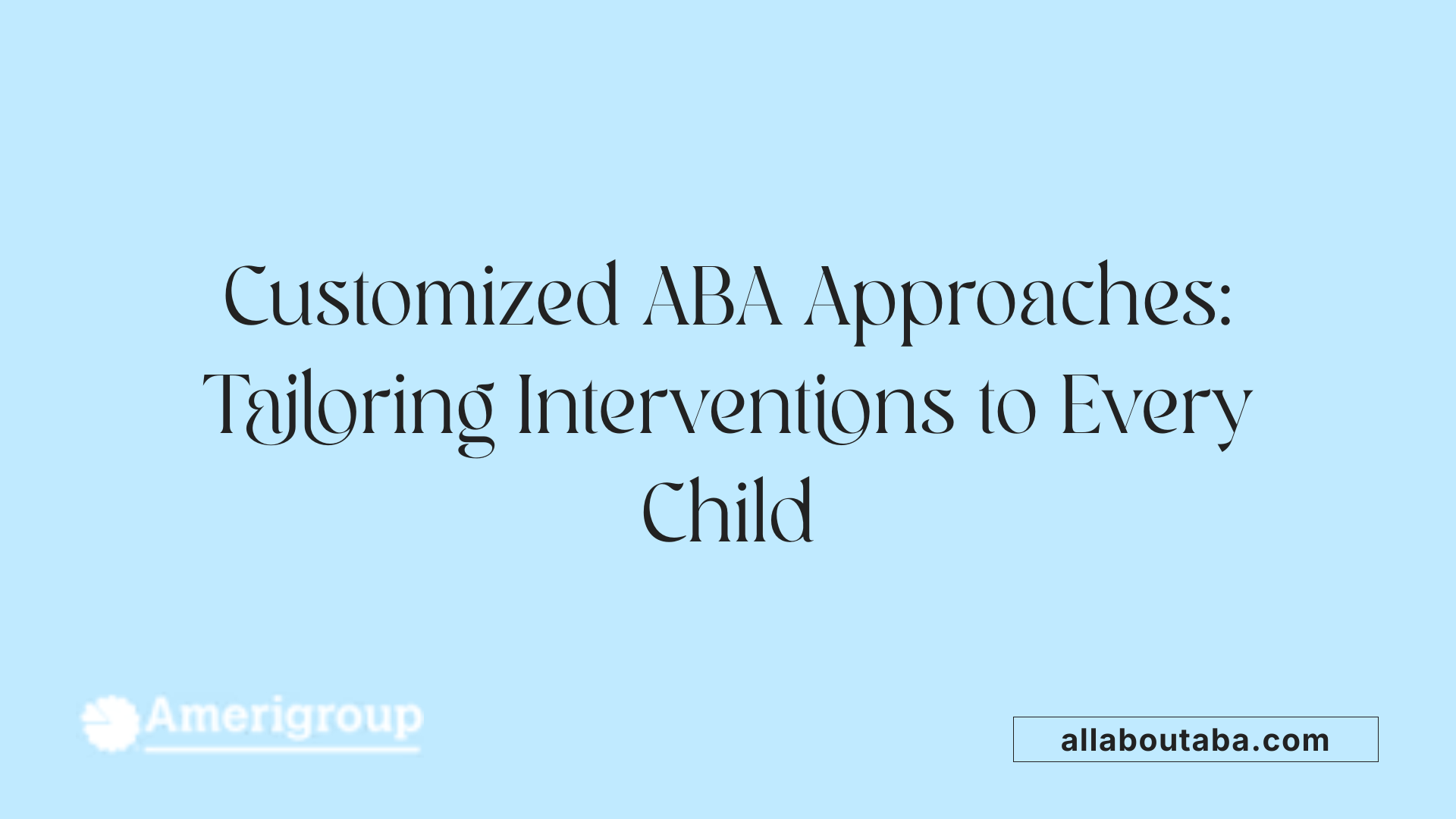
What are the different types of ABA therapy?
Applied Behavior Analysis (ABA) encompasses various therapy types designed to support children with autism by enhancing skills and managing behaviors.
Discrete Trial Training (DTT) is a highly structured technique. It breaks down skills into small, manageable parts, using repetition and positive reinforcement. DTT is especially effective for teaching foundational abilities like language, imitation, and specific tasks.
Natural Environment Teaching (NET) contrasts with DTT by focusing on learning in natural settings. It leverages play and everyday routines, encouraging children to apply skills spontaneously in real-life environments. NET is essential for promoting generalization beyond the therapy context.
Pivotal Response Treatment (PRT) centers on boosting motivation. It achieves this by teaching pivotal skills such as choosing activities and taking turns through engaging, natural interactions. PRT often complements other ABA methods and emphasizes child-initiated learning opportunities.
Verbal Behavioral (VB) Training aims to develop functional communication skills based on the principles of ABA. It builds language through specific verbal operants like requesting, labeling, and conversational skills.
Selecting and Combining ABA Methods for Effective Outcomes
Rather than applying a single approach, many ABA programs blend these methods to tailor interventions to each child's distinct needs and goals. Combining structured learning via DTT with naturalistic opportunities from NET and motivational strategies from PRT creates a comprehensive support system.
This individualized framework ensures skill-building is balanced with generalization and motivation, leading to more meaningful and lasting outcomes for the child. Family collaboration and continual assessment help refine these combinations to maximize progress.
| ABA Therapy Type | Focus Area | Key Features and Benefits |
|---|---|---|
| Discrete Trial Training (DTT) | Structured skill acquisition | Breaks skills into steps; repetition; positive reinforcement effective for basics |
| Natural Environment Teaching (NET) | Generalization and natural use of skills | Learning through play/routines; promotes real-world application |
| Pivotal Response Treatment (PRT) | Motivation and engagement | Child-selected activities; focus on pivotal life skills; increases compliance |
| Verbal Behavioral (VB) Training | Language development | Builds communication through functional verbal skills |
Employing these diverse ABA modalities with a personalized approach helps children with autism build essential abilities while managing behavioral challenges effectively.
Measuring Progress and Ensuring Sustainable Outcomes in ABA
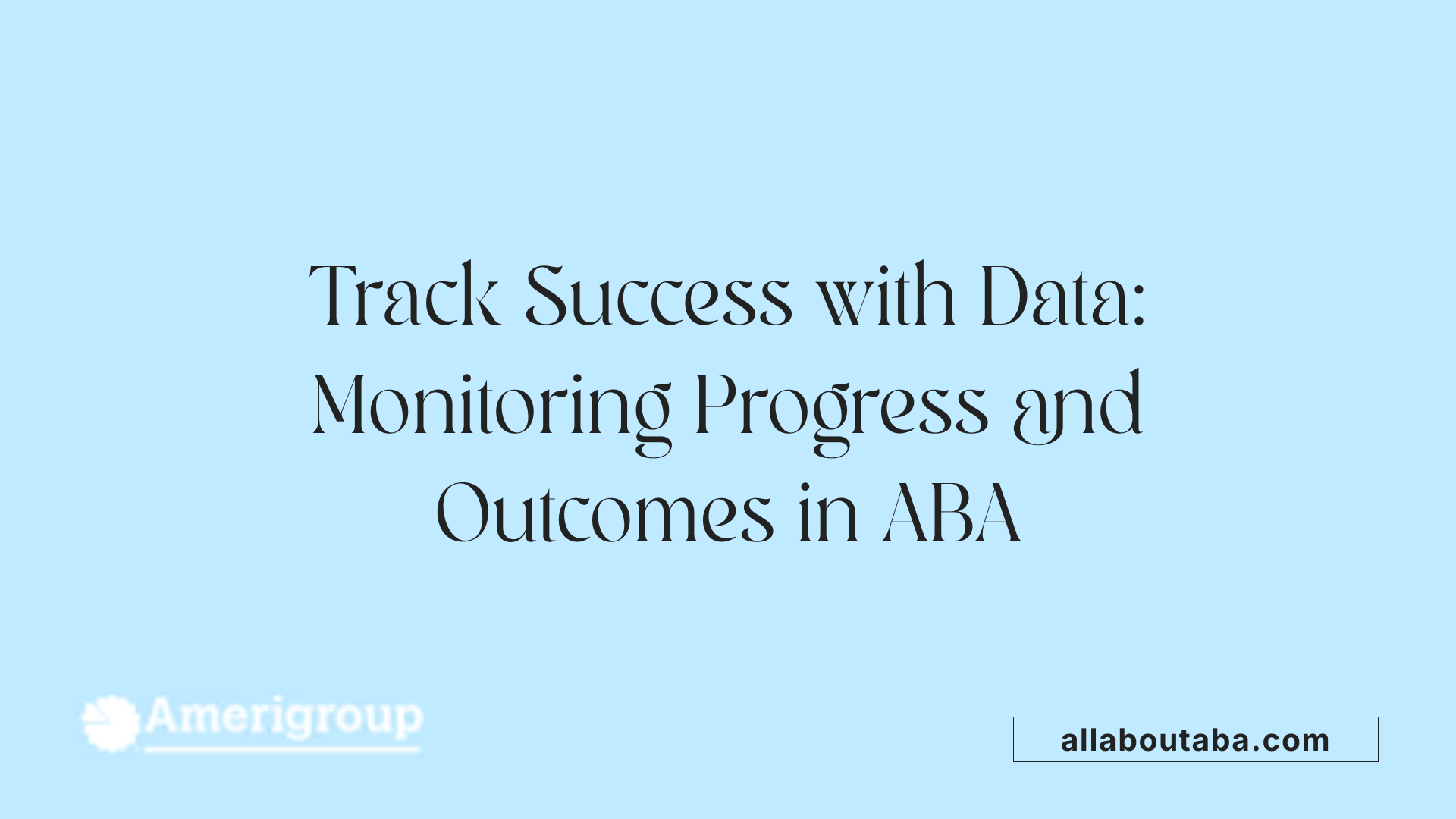
How is progress measured in ABA therapy?
Progress in ABA therapy is primarily measured through systematic data collection and behavioral assessments. Therapists regularly record specific behaviors, focusing on frequency, duration, and latency to track improvements or challenges.
Standardized tools such as the Verbal Behavior Milestones Assessment and Placement Program (VB-MAPP) are widely used to monitor developmental milestones in language, social skills, and other domains. This helps in tailoring individualized treatment plans that address each child's unique needs.
Visual aids like graphs, goal tracking sheets, and progress charts are employed to make behavioral changes clear and accessible to both therapists and families. These visuals support understanding of progress in real time.
Parent feedback is an essential component of ongoing evaluation. Incorporating observations from home provides valuable insights into how skills generalize beyond clinical settings.
Therapists continually adjust treatment based on this ongoing evaluation. By responding to data trends and feedback, interventions remain effective and relevant, promoting skill generalization and sustainable outcomes for children with autism.
Building Inclusive, Supportive Events for All
Implementing autism-friendly event planning strategies grounded in Applied Behavior Analysis and sensory-aware practices transforms traditional event experiences into inclusive, empowering environments. By respecting individual needs, promoting communication through visual supports, supporting social engagement, and collaborating with qualified professionals, event organizers can significantly reduce anxiety and enhance participation for individuals with autism. These approaches not only foster comfort and understanding but also celebrate diversity, paving the way for truly welcoming communities.
References
- Autism in the classroom: Strategies for success
- 15 Behavior Strategies for Children on the Autism Spectrum
- Effective Classroom Strategies for Teaching Students with ...
- Autism and Anxiety: Treatment Options and ABA Techniques
- Interventions for autism spectrum disorders (ASD)
- Applied Behavior Analysis (ABA)
- Applied Behavior Analysis (ABA)
- ABA Therapy Age Limits & Age Range Based on Evidence
Other articles
Recent articles

Best Practices For Telehealth Autism Therapy

How To Help Autistic Children Develop Friendship Skills

How Schools Can Support Autistic Students In Career Prep

Best Strategies For Autism-Friendly Event Planning

Understanding Noncontingent Reinforcement In Autism Behavior Plans

How Drama Therapy Benefits Autistic Individuals

Best Practices For Autism-Friendly Fitness And Recreation Centers

Best Ways To Promote Healthy Social Media Use For Autistic Teens

How To Help Autistic Children Cope With Public Speaking

Autism And Strategies For Managing Unexpected Changes

Best Podcasts About Autism For Parents And Educators

Autism And The Impact Of Seasonal Changes On Behavior

The Role Of Diet In Managing Co-Occurring Conditions With Autism

Sleep Challenges In Autism And Practical Solutions

Best Ways To Build Daily Routines For Autistic Children

Best Practices For Supporting Autistic Entrepreneurs

Autism And Strategies For Navigating Large Social Gatherings

Adaptive Sports And Recreational Activities For People With Autism

Autism And The Benefits Of Story-Based Learning Activities

Understanding The Role Of Play In Autism Development

Autism And The Impact Of Environmental Noise On Learning

How To Create Autism-Friendly Community Spaces

Autism And Chronic Health Conditions: What To Know

The Role Of Care Managers In Autism Life Planning

How To Teach Social Boundaries To Autistic Children

How Autistic Individuals Experience Empathy Differently

How To Support Autistic Employees In Remote Work Settings

Autism And The Relationship Between Motor Skills And Learning

How To Create Community Resource Guides For Autism Families

How To Teach Daily Living Skills To Autistic Teens

Autism And The Impact Of Mind-Body Practices On Stress Reduction

Autism And The Benefits Of Outdoor Group Activities

How To Create Autism-Friendly Sensory Paths In Schools

Best Practices For Autism-Friendly Park And Recreation Areas

Autism And Strategies For Reducing School Refusal

Supporting Autistic Individuals In Public Speaking

The Role Of Diet In Managing Autism Symptoms

The Benefits Of Gardening Clubs For Autism Social Development

How To Prepare Autistic Children For Dental Visits

Autism And Employment: Career Paths That Work

Best Practices For Autism-Friendly Hotels And Lodging

The Impact Of Screen Time On Autism Development

Autism Screening Tools For Early Childhood

The Role Of Physical Exercise In Autism Therapy

Best Strategies For Supporting Autistic College Students

The Role Of Technology In Autism Early Detection

Sensory-Friendly Classroom Design Ideas For Autistic Students

The Role Of Speech Therapy In Building Social Communication Skills

Best Strategies For Handling Autistic Burnout In Adults

Autism And The Importance Of Predictability In Routine

Autism And Peer Education: Teaching Acceptance In Schools

Best Practices For Sensory-Friendly Libraries And Reading Rooms

Self-Advocacy Skills For Autistic Adults

The Role Of Technology In Autism Peer Communication

Promoting Physical Activity In Children With Autism

How To Prepare Autistic Children For Medical Procedures

The Role Of Social Media In Autism Advocacy And Awareness

The Impact Of Sensory Rooms In Public Facilities For Autism

How To Create An Autism-Friendly Holiday Celebration

Best Practices For Inclusive Education For Autistic Students

Autism And Mental Health: Recognizing Signs Of Distress

Best Practices For Sensory-Friendly Waiting Rooms

The Role Of Teachers In Early Autism Red Flag Identification

Autism-Friendly Housing Design Features

Autism-Friendly Housing Design Features

How Environmental Modifications Improve Autism Outcomes

Autism And Technology-Based Learning Tools

Supporting Autistic Children Through Changes In Routine

The Link Between Autism And Working Memory Challenges

Best Practices For Autism-Friendly Cooking Classes

Autism And The Benefits Of Structured Music Lessons

Best Books To Teach Kids About Autism Acceptance

Sensory Diets And Their Benefits For Autism Management

How To Prepare Autistic Teens For Driver’s Education

How To Teach Autistic Teens About Healthy Relationships

The Role Of Visual Prompts In Building Daily Habits For Autism

Addressing Sleep Regression In Children With Autism

Understanding Social Stories And How They Help Autistic Children

Navigating Insurance Coverage For Autism Therapy Services

How To Prepare Autistic Adults For Independent Travel

Supporting Autistic Individuals In Volunteer Work

How Mindfulness Practices Can Support Autism Well-Being

Understanding Hyperfocus And Special Interests In Autism

Understanding Stimming As A Self-Regulation Tool

Sensory-Based Interventions For Autism At Home

Best Ways To Introduce Self-Advocacy In Autistic Teens

Best Ways To Support Autistic Employees In Customer Service Roles

Best Practices For Autism-Friendly Volunteer Programs

Autism And The Benefits Of Sensory Play For Emotional Growth
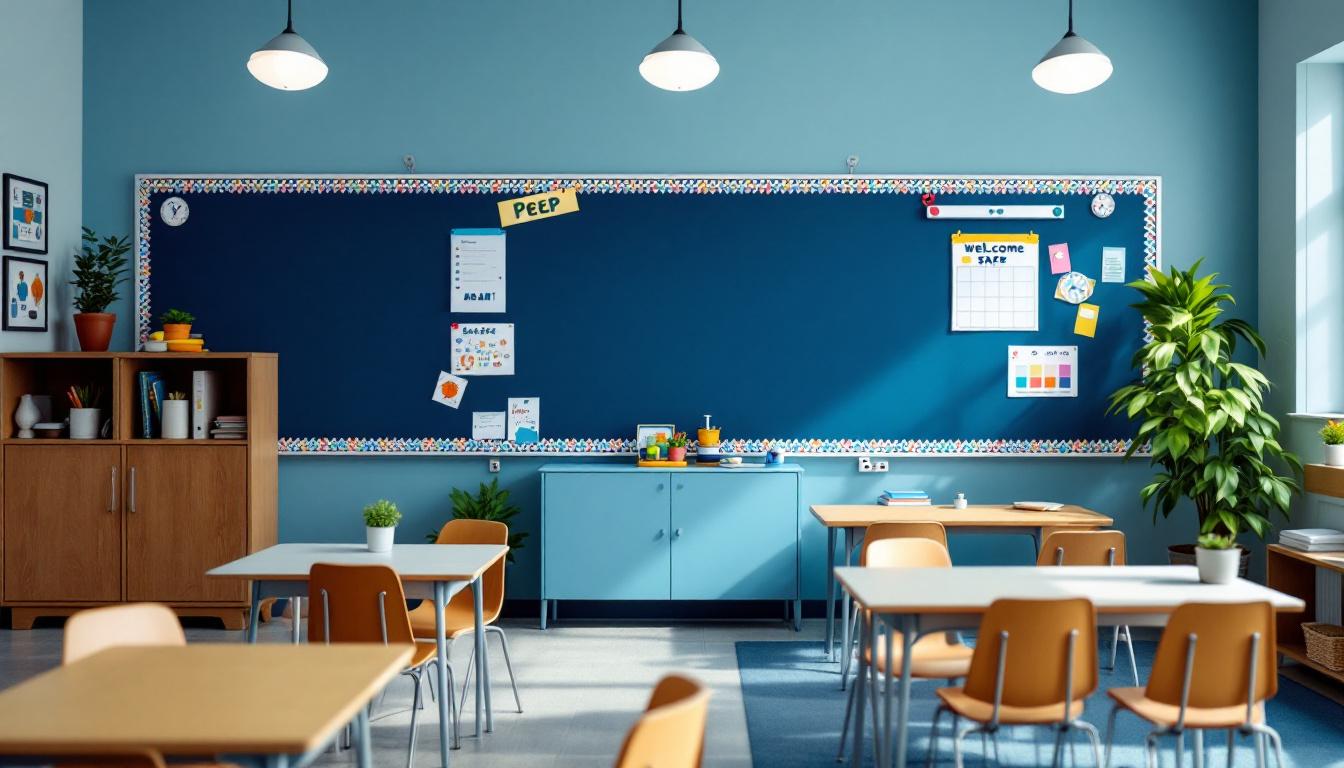
Autism And Strategies For Building Peer Relationships

Understanding How Autism Affects Memory Processing

Autism And Strategies For Building Coping Skills In Teens

The Role Of Parent Training In Autism Intervention Programs

Autism-Friendly Workplace Accommodations

Using Visual Timers For Autism Time Management

What Is ABA Therapy?

Autism and Sleep

Do Plastic Toys Cause Autism?

Autism Facial Expressions

Autism and Motor Skills
We’re All About You, Your Family, and Your Child

